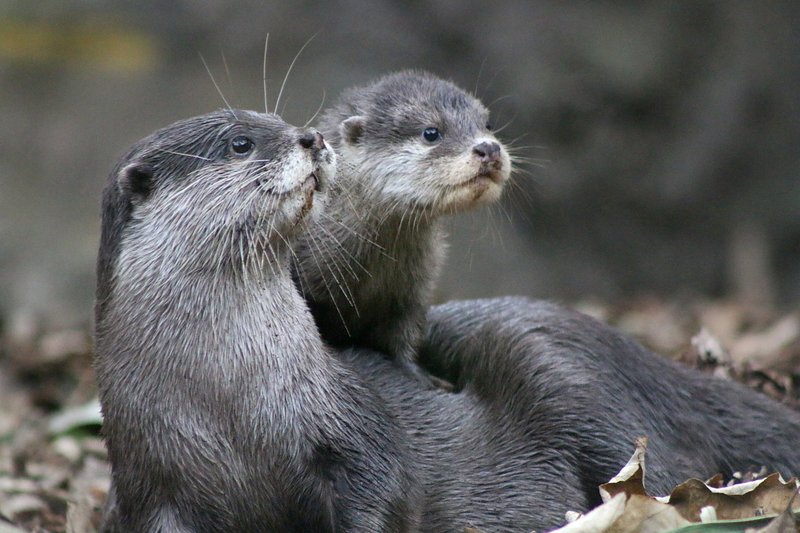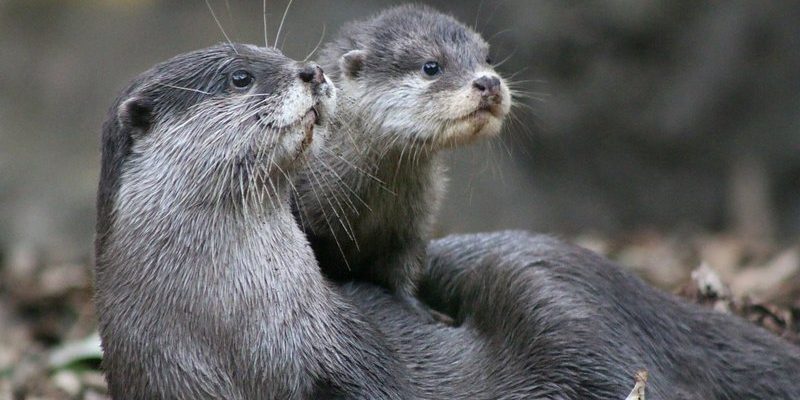
Living in the lush rivers of South America, giant otters rely on their strong family bonds to raise their offspring. They’re not just raising their young; they’re teaching them the ropes of survival. They’re like the ultimate river guides, showing their little ones where to find food and how to dodge danger. Let’s dive into the world of giant otters and explore how they raise their young in the wild.
The Family Structure of Giant Otters
Giant otters thrive in family groups, often called **rafts**. These rafts can include up to 20 members, but they typically consist of a mother, her offspring, and a few other relatives. This social structure isn’t just for show; it’s essential for the survival of the young otters. The collaborative nature of these groups means they can work together to hunt, protect, and teach the youngsters.
The **hierarchical system** among the family members also plays a crucial role. Usually, the mother is the primary caregiver, but other adult otters step in to help. This teamwork can be likened to having a built-in babysitter—there’s always someone watching over the little ones while mom is off hunting. When you think about it, this constant support system really sets the stage for the young ones to thrive.
Young otters, or pups, are born blind and completely helpless. They rely on their mother’s care in these early days. As they grow, the extended family helps teach them important skills. Imagine a little pup watching its mother catch fish, learning by imitation. This method is vital; observing others makes the learning process more effective, ensuring they develop the skills they need to survive.
Breeding and Birth: A Time of Vulnerability
The breeding season for giant otters typically occurs during the dry months. After a gestation period of about 70 to 90 days, the mother gives birth to anywhere from one to six pups. The exact number often depends on the availability of food and environmental conditions. Once born, the young otters are incredibly vulnerable. That’s why finding a safe den is so important.
Carefully chosen dens, usually situated near water, provide shelter and a safe space for the pups during their early days. The mother will keep them hidden from potential threats, which can include larger predators like caimans and jaguars. Imagine that first moment when the mother brings her pups out of the den. It’s like a mini adventure as they tentatively explore the world around them, always under her watchful eye.
As the pups start to grow and become more mobile, the risks increase. The mother must balance the need to forage for food with the obligation to protect her young. It’s a delicate juggling act. She often leaves the pups with other family members while she hunts, ensuring they’re safe while she takes care of the family’s feeding needs.
Feeding and Nutrition for the Pups
Once the pups are around six weeks old, they start to swim and explore their surroundings. This is when the mother begins to introduce them to solid food, primarily fish. Isn’t it fascinating how she transforms from a caregiver to a teacher? She often catches fish and brings it back to the den, allowing her pups to sample their first meals.
Feeding young otters isn’t just about providing food; it’s a critical teaching moment. The mother demonstrates how to catch and eat fish, encouraging the pups to watch closely and learn the art. Imagine a playful scene where the pups mimic her, splashing around and practicing their skills. This not only builds their confidence but also develops their hunting instincts.
Nutrition is crucial during these early months. A growing pup needs a lot of energy, so the mother ensures they have a varied diet, including fish and other aquatic creatures. Just like any parent, she’s got to make sure her children eat well to grow strong and healthy. As they mature, they gradually become more independent, honing their skills under the watchful gaze of their family.
Learning Through Play
Playtime is a significant aspect of how giant otters raise their young. You might wonder why play is so important. Well, it’s through play that pups learn vital survival skills. They wrestle, chase, and splash about in the water, all while building their coordination and strength. It’s a bit like kids on a playground—having fun while learning how to navigate their world.
During these playful moments, pups also learn social cues and behaviors from their family. Observing interactions among family members helps them understand their roles within the raft. For instance, when a pup playfully engages with a sibling, they’re not just having a good time; they’re practicing future teamwork essential for hunting and protecting their family.
This playful behavior plays a vital role in their development. As they grow, the lessons learned during these fun moments translate into real-life skills needed for survival. Like kids who learn to share and cooperate during play, giant otter pups gain the fundamental social skills they need to thrive as part of their close-knit family unit.
Protection and Defense Strategies
As adorable as they may be, giant otter pups are not without their dangers. Predation is a constant threat, especially when they’re young and more vulnerable. The family unit is essential for protection; when danger arises, they rally together to defend one another. Imagine a scene where the mother calls her pups close, forming a tight unit while they assess the situation at hand.
The adult otters use various strategies to protect their young. If they sense a predator nearby, they might create a diversion, drawing attention away from the pups. It’s a real-life demonstration of teamwork and instinct, showcasing the strong bond within the group. Honestly, their dedication to safeguarding their young is incredibly touching.
In addition to immediate threats, giant otters also have to contend with habitat loss and pollution. As the waters they inhabit become more polluted, their food sources dwindle. This creates a ripple effect that impacts the young otters’ growth and survival. It’s a stark reminder of how interconnected life is in the wild, showcasing the challenges these amazing creatures face.
Growing Up: Independence and Beyond
As the pups reach about a year old, they start to gain confidence and independence. While they still rely on their family, they’re slowly learning to hunt for themselves. It’s a proud moment for any parent, watching their little ones venture out and try their skills. They’re no longer just observers; they’re active participants in the family’s life.
During this transition, the mother continues to guide her young ones, providing encouragement and support as they practice what they’ve learned. Picture a scene where the pups are swimming alongside their mother, mimicking her movements as they each try to catch their first fish. The lessons of teamwork and perseverance come into play, as they all work together while developing their individuality.
Eventually, once they reach maturity—around two years old—the young otters will leave the family group to find their own territory. This journey into independence can be bittersweet for their parents, but it’s a necessary step for their survival. The cycle continues, ensuring that the giant otter populations remain strong as they create their own families down the line.
In conclusion, raising young giant otters in the wild is a complex and beautiful journey fueled by strong family ties, playful learning, and cooperative behavior. These fascinating creatures remind us of the power of community and the importance of nurturing the next generation. As we continue to learn about their lives, it becomes even more vital to protect their habitats, ensuring they can thrive for generations to come.

